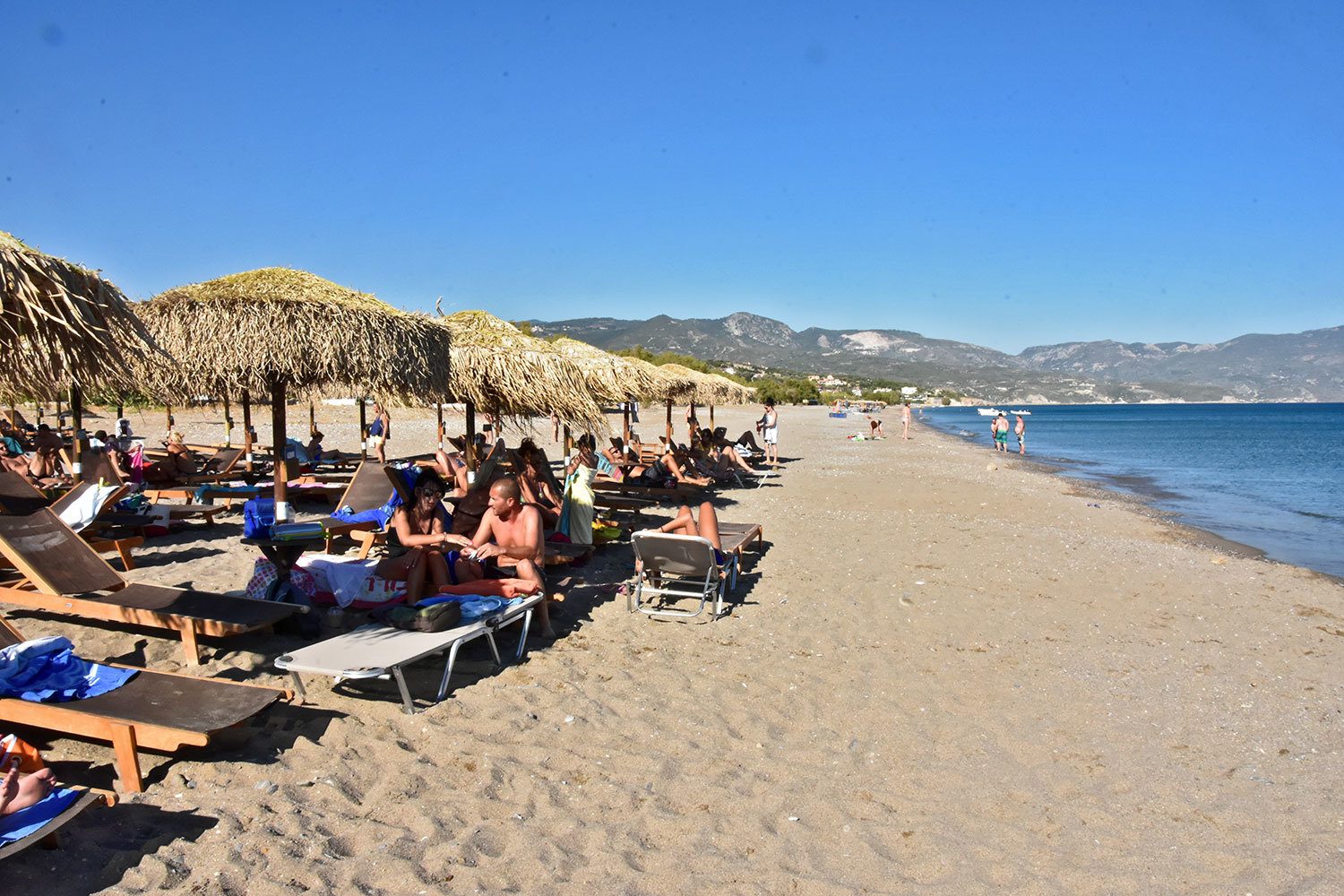
Summer in Samos
The island of Hera and Pythagoras, more beaches than you can count and a famous wine to sweeten your evenings combine to create a unique setting
On this luxuriantly green island on the northeastern edge of the Aegean, covered by pine forests, olive and citrus groves and vineyards, myth and history take on a special allure. This was the birthplace of the goddess Hera, Zeus’ wife; of Aristarchos, the celebrated astrophysicist who first expounded the theory of the earth’s rotation; and of the great mathematician Pythagoras. On this island in the North Aegean, you will see traces of their presence, as you discover Samos’ cool, clear waters, untouched mountain villages, delicious local foods and superb sweet wine.
What to do on Samos
An archaeologist’s treasure chest
Samos has more than its share of antiquities and attractions for you to unearth. Among them, the walls of Polykrates, the Ancient Theatre and Roman Baths, and the amazing tunnel of Eupalinos, one of the great engineering feats of all time. Finally, the Temple of Hera, and the sanctuary around it, in the supposed place of her birth, was one of the largest temples in Greece.
Vathy, living traditions in the present tense
Have a wander round the old part of Samos’ main port-town, built on a hillside overlooking the sea. The narrow streets and handsome two-storey houses with tiled roofs and charming individual features, will give you a glimpse of pre-20th-century life. Some homes attract your attention with an elegant stone staircase, others will have interestingly carved wooden doors, or the enclosed balconies typical of Anatolia. But walk down to the waterfront and you’re back in today. The town extends around the deep bay that gave it its name.
Beaches, beaches, beaches
Here you’ll have an embarrassment of riches and the fun of searching for the one you like best. Do you prefer organised or private and pristine? ? Vast sandy stretches or intimate coves? Crowded and sophisticated or remote-and-bring-your-own-picnic? Sand or fine pebbles? Beaches of every type skirt the island. On the north coast, you could start with popular Kokkari and the quieter beaches next door (Lemonakia, Tsamadou, Tsambou) as far as Agios Konstantinos. Near Karlovasi there’s Potami, a big, beautiful strand, with a selection of bars and restaurants behind it. At Vathy, everyone flocks to Psili Ammos (‘fine sand’) and Mykali, a beach that goes on forever. The south coast offers Kambou, Votsalakia (‘little pebbles’) and gorgeous Chrysi Ammos (‘golden sand’). Take your pick or try them all.
Aperitif with a pedigree
Samos’ reputation for fine wine goes back to antiquity. It’s no accident that the Catholic Church used to have a special order of accredited Samos wine for its Holy Communion services. Today the famous local grape, Muscat Blanc a Petits Grains, continues to produce a dessert wine that has oenophiles raving.
Hidden gems of Samos
Sturdy Samos ships
The pine of Samos is harder and more resistant to weather than other types of wood. Its excellent quality led to shipbuilding becoming a major occupation on the island. A genuine shipyard from the past. From the ancient Samaines, wooden biremes that dominated the Aegean in the 6th century BC, until the advent of the steamship, the boats of Samos were always superior. You can still see one of the last tarsanas or shipyards from this period at Agios Isidoros.
Mountain villages, the aces up Samos’ sleeve
Drag yourself off that beach you discovered and venture into the mountains. Here you’ll find delightful hamlets tucked into lush green slopes, idyllic holiday settings. Mt Kerketea and the area from Potami to Mikro and Megalo Seitani form a vast, unofficial natural park, just the place to enjoy the other side of Samos’ character.
The cave of Pythagoras
Found at the foothills of Mt Kerketea is a cave where, according to some sources, Pythagoras hid when the tyrant Polykratis was pursuing him. There is also another version of history which says that Pythagoras used the cave as a sanctuary to contemplate philosophical issues undisturbed. Some 320 steps lead to the entrance of the cave, from where the view is spectacular.




